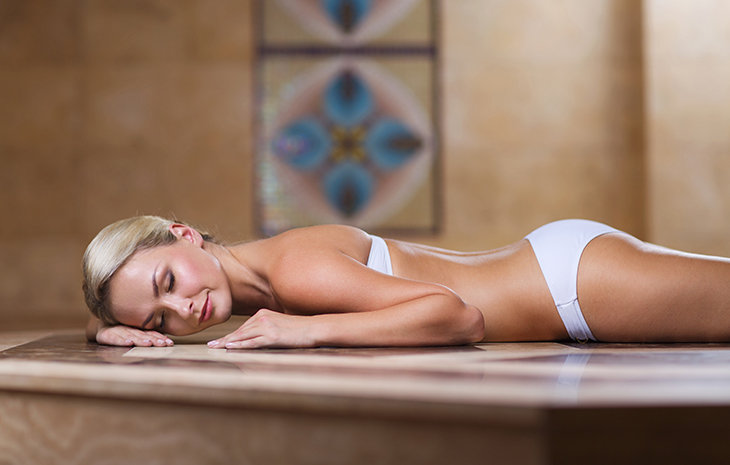Historians are unclear of when humans began to bathe indoors, but what we do know is that the Ottoman Turks inherited the bath concept from the Romans – in terms of architecture and tradition – and adapted it to Turkish tastes, calling it a “hammam.”
While hammams are exceedingly prevalent in Turkey, Morocco, and the Middle East, the main difference between Islamic hammams and Turkish hammams is the air. The air in a Turkish hammam is dry whereas the air in an Islamic hammam is steamy. The commonality between both bathes is that they act as a social centerpiece in the community.
The Bath Procedure:
The hammam journey begins in the hot room. The natik or tellak (the female or male attendant respectively) will leave you here to relax, loosen up, and most importantly begin to sweat. This is the perfect time to take in the amazing architecture of a Turkish bath. Most are covered in marble, feature a large dome, several basins, and an impressive göbektaşı – the central, raised platform above the heating source.
After laying on the göbektaşı for about 15 minutes, the masseur will enter and instruct you to lie down on the marble floor while they scrub your entire body with the kese (a course mitt) to remove any layers of dead skin. Try to remember the “no pain, no gain” mantra during this portion, as your masseur’s main goal is to extract the impure, dead skin cells on your body and allow you to start fresh and revived. Once scrubbed, you’ll take your place back on the göbektaşı in the hottest section where your attendant will be waiting for you with a lacy, foam-filled cloth for a sudsy massage.
Following this rejuvenating experience, most will linger in the bath area, catch up with friends, and simply relax. This hot section of the Turkish bath is designed in such a way that rays of light filter into the area from a high central dome, illuminating the steam and creating an otherworldly feeling.
Cooling Down:
Once back in the cold section, it is custom to have a glass of sherbet, an Ottoman-style juice or a cup of Turkish tea. The idea here is to spend a few minutes allowing your body to return to its normal temperature.
The ancient practice of frequenting a hammam transcends over centuries and is still to this day a unique and distinctive place, dedicated to relaxing the body and mind. The Mansions at Acqualina features a hammam for residents to decompress and take part in this cleaning ancient ritual.

